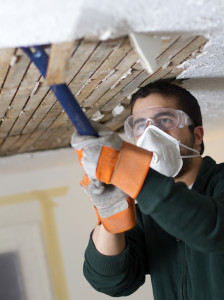Understanding Mold Testing, Remediation and Cleanup | Mold Remediation Process
Mold testing services Seattle
Understanding Mold Testing, Remediation and Cleanup
 If you suspect there is a mold problem in your home, the first step is to hire a Seattle mold testing company to perform an inspection. A certified microbial investigator will test air and surface samples for the presence of mold and determine the type of mold, which will guide the development of a remediation plan.
If you suspect there is a mold problem in your home, the first step is to hire a Seattle mold testing company to perform an inspection. A certified microbial investigator will test air and surface samples for the presence of mold and determine the type of mold, which will guide the development of a remediation plan.
Most air samples are taken with a device called a spore trap. There is a sticky center to the device that traps air as it moves through. The mold tester sends the spore trap to a lab for analysis. The lab workers apply chemicals to the sticky part of the trap and observe it to see if the mold spores absorb them. Then, it is possible to identify and quantify the spores.
Mold testers generally use one of three methods to obtain mold samples: bulk sampling, swab sampling or tape sampling. A bulk sample is a piece of the actual surface being checked for mold. Swap samples are obtained with a type of cotton swap. Tape samples are gathered with a piece of clear tape applied to the area to pick up any mold that is present.
The Mold Remediation Process
If mold testing identifies an issue that requires mold remediation, you will need a reputable contractor like Allied Restoration Company.When removing mold, it is not uncommon for spores to become airborne. Our Seattle remediation contractors will contain the area to keep airborne mold spores from spreading to unaffected areas.
First, our contractors will install a HEPA Filtered Negative Air machine, which draws in the airborne mold spores through a tube, creating a negative pressure environment. Next, the area will be sealed off with plastic, and all outlets and fixtures will be covered.
Although the contractor will salvage as many materials as possible, any items that have been affected may need to be removed. Damaged materials typically include the following:
- Baseboards
- Carpeting
- Carpet padding
- Drywall
- Insulation
Typically, when mold is present, it is also found on organic, structural materials. Mold often imbeds into materials with its hyphae, a thread-like material that is able to penetrate up to 1/32 inch. The contractor will need to clean them to remove the mold growth.
There are several ways to remove the hyphae, such as sanding, media blasting and dry-ice blasting. Sometimes, the cleaning process is aided by the use of liquid cleaners, which loosen the hyphae.
All of the heavy cleaning usually distributes a large amount of microscopic particles, which must also be removed. Then, the contractor will use a HEPA vacuum to clear any spores from the walls, ceilings and floors. The vacuums are so strong that they prevent the spores from being redistributed. The contractor may also choose to clean every surface with an antimicrobial agent.
Finally, the contractor will use HEPA filtered air scrubbers to recycle the air and ensure it is clean. The process takes at least 24 hours and may continue for several days before the mold remediation process is complete.
To learn more about mold remediation or to schedule a visit from a Seattle contractor, call Allied Restoration Company at 425-458-5756.





